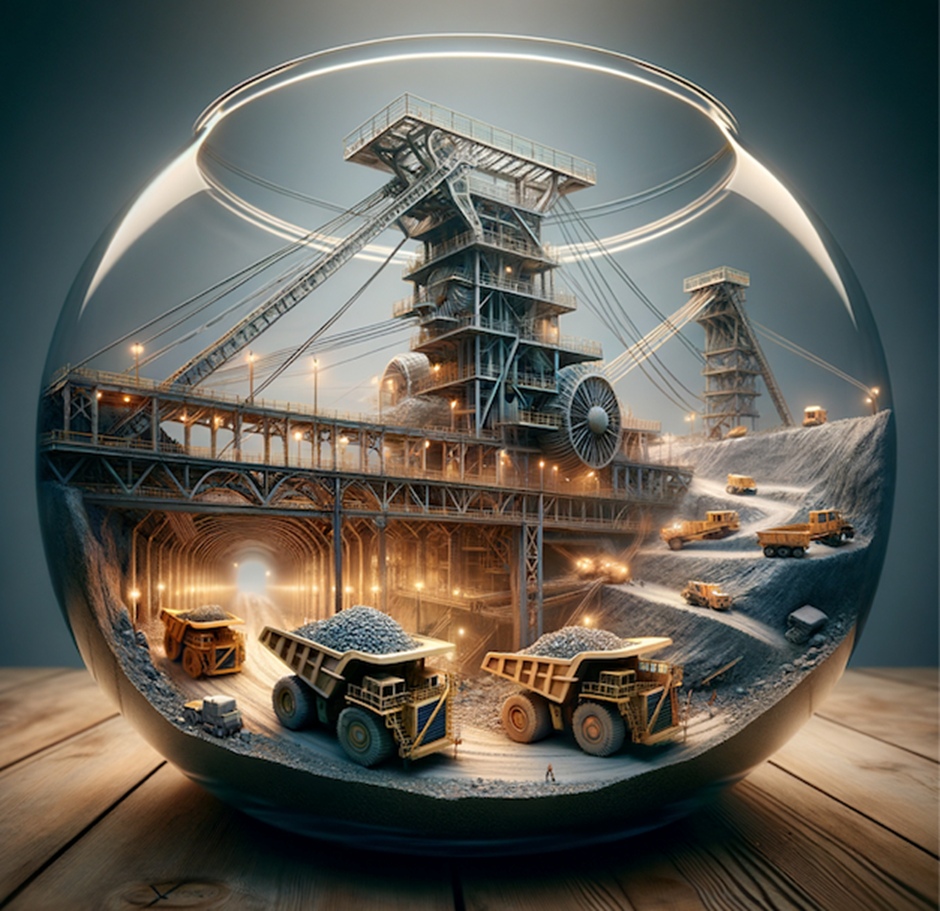The ESM Gift
Recognising the Copper & Gold ‘Stars’
There is a Romanian folk tale (1) that tells the story of three sisters, the youngest of whom claims she would bear twin sons with golden stars on their foreheads if she married the emperor. The emperor overhears and marries her, but when the twins are born, his jealous older sisters replace the babies with animals and cast the real children into the river.
The twins are rescued and raised by a humble fisherman. As they grow, their golden stars reveal their royal heritage. Eventually, through a series of trials and magical quests—including obtaining the water of life and the speaking bird—they uncover the truth. The evil sisters are punished, and their mother is reinstated as empress, with the twins recognised as princes.

In many ways, this timeless story mirrors the journey of Euro Sun Mining (ESM)—a company whose true value and potential are now finally being recognised after years of perseverance. Like the golden-starred twins, the possible exploitation ESM’s copper and gold resources have endured long periods of neglect and opposition. Decades of mining dormancy in Romania, coupled with foreign-backed resistance to permitting, kept the company’s promise obscured. Yet through resilience, integrity, and a commitment to responsible development, ESM is beginning to shine.
The recent designation of the Rovina Valley Project as a Strategic Project under the European Union’s Critical Raw Materials Act (CRMA) has marked a significant turning point. This recognition not only highlights ESM’s importance to European energy security, but also affirms the company’s unique and responsible mining approach. It is a well-deserved moment of validation—and one driven not just by policy, but by shifting sentiment and a growing awareness of global realities.
As Europe pursues its net-zero ambitions and acknowledges the vital role of energy security in economic resilience, projects like Rovina Valley have moved into the spotlight. Governments are increasingly focused on vertical integration of critical raw material supply chains, seeking domestic solutions to reduce dependence on volatile foreign markets. While countries like those in Scandinavia have led the way with progressive mining policies, the rest of Europe is now aligning itself with this forward-thinking approach.
Legislation such as the CRMA is more than a regulatory tool—it is a symbol of Europe’s growing determination to be self-reliant in an unpredictable world. In this new era of strategic autonomy, Euro Sun Mining stands as a beacon of what is possible when perseverance, purpose, and national interest align.
The Gift of Employment
Hunedoara County currently faces one of the highest unemployment rates in Romania—a stark contrast to its legacy as the heart of Eastern European mining during the mid-20th century. Once a vibrant and prosperous industrial hub, the region’s decline began with the fall of the communist regime, as government support waned and environmental challenges mounted. Historical records housed in the Gold Museum of Brad bear witness to the county’s golden era—a time of progress, innovation, and economic vitality. Today, however, decades of underinvestment have left many villages scarred by derelict buildings, deteriorating infrastructure, and significant depopulation. With much of the working-age population having migrated to major cities or abroad in search of employment, many communities are left with aging residents and overstretched municipalities struggling to deliver basic services.

Romanian Unemployment Figures per County with Hunedoara representing one of the highest at 4% (2)
The Rovina Valley Project, led by ESM, represents a vital turning point. During the initial two-year building phase, the project is estimated to employ 2000 people. Once steady state production is achieved, the mine plan indicates 600 jobs will be created over a 35 year period. These figures exclude the wide array of indirect employment and entrepreneurial opportunities (estimated to be over 2000 people) that naturally arise alongside large-scale mining developments. From hospitality and food services to transport, real estate, logistics, and beyond, the project is poised to spark a revival of local enterprise.
In addition to driving business growth, mining royalties provide local authorities with an economic “gift” to support critical community needs—from infrastructure upgrades and social programs to improved service delivery. In Romania, a 5% royalty on copper and 6% on gold ensures that the benefits of natural resource development extend well beyond the mine site.
During Phase 1 of the Rovina Valley Project alone, ESM is projected to contribute over US$211 million in royalties across the first 17-year period. These funds will be distributed to benefit the people of Hunedoara County directly:
- 45% to local towns
- 35% to the county
- 20% to the state
These royalties will also support long-term economic diversification programs, helping ensure that local communities not only recover—but thrive—even after mining operations come to an end.
In total tax benefits, the Romanian State is set to gain more than 45% of the Rovina Valley mining product value, meaning over US$470 million during the first 17 years of mining. This figure will double during mining the underground deposit at Ciresata, bringing a further contribution to local and state taxes to over US$ 950 million
The Gift of Skills Development
The development of the Rovina Valley Project brings with it the invaluable gift of skills development. Mining operations demand a wide array of expertise—ranging from information technology, electrical and plumbing work, construction, and safety, to legal, environmental, communications, and financial disciplines. As the project advances, the need to source and cultivate this diverse talent pool will become a critical focus. Recognising this, ESM has already begun identifying local educational and training institutions that could be strengthened or expanded to support the development of these essential skills. Encouragingly, a number of Romanian mining professionals currently abroad have expressed a strong interest in returning home to contribute to the project, underscoring the potential for both local capacity building and talent repatriation.
The Gift of International Capital Investment
The Rovina Valley Project stands to benefit significantly from international capital investment through ESM, a publicly listed global company. ESM’s involvement ensures not only the infusion of essential funding to launch a project of this magnitude, but also a strong commitment to internationally recognised governance and operational standards. In today’s interconnected world, such backing is critical for ensuring transparency, efficiency, and long-term viability. The project is locally managed by SAMAX Romania SRL, ESM’s Romanian subsidiary, bridging global expertise with local execution.
Just as the twin princes in the Romanian folk tale ultimately restored justice and prosperity, Euro Sun Mining’s journey reflects the transformative power of resilience, vision, and rightful recognition. The Rovina Valley Project is more than a mining operation—it will come to represent a symbol of revival for Hunedoara County, a catalyst for skills development, and a beacon for international investment guided by responsible practices. With its designation as a Strategic Project under the CRMA and its potential to generate employment, stimulate local enterprise, and contribute nearly a billion dollars over time in royalties and taxes, ESM is poised to help Romania reclaim its legacy as a leader in European mining. In doing so, it is not only restoring lost potential but also writing a new chapter—one where community, country, and company rise together, under the shared light of opportunity.
References:
- The folk tale “The boys with the golden stars’, published in Convorbiri Literare In October 1874. https://en.wikipedia.org/wiki/The_Boys_with_the_Golden_Stars
- Unemployment Figures per County 31 July 2024, https://www.zf.ro/eveniment/harta-judetelor-dupa-somaj-rata-somajului-a-crescut-in-28-de-judete-22448046
Written by Richard Dolamore, in his personal capacity.
Why Environmental Baseline Data Collection is Important for Euro Sun Mining
Euro Sun Mining’s Rovina Valley Project will be evaluated on multiple factors. It will be assessed on how its copper contributes to Europe’s energy transition, the number of local jobs created, the success of regional gentrification, and the improvement of infrastructure in Hunedoara County. However, an equally critical factor in this evaluation is the project’s environmental stewardship and its relationship with the natural ecosystem.
For Euro Sun Mining, environmental baseline data collection remains a key activity at every stage of the project—from exploration and development to full-scale operations. Establishing a reference point for existing environmental conditions ensures compliance with regulatory requirements and helps minimise future ecological and social impacts.
Key Elements of Our Environmental Baseline Data Collection
- Physical Environment
- Climate & Meteorology: For over a decade, Euro Sun Mining has measured and recorded temperature, precipitation, humidity, and wind patterns using weather stations distributed throughout the mining concession.

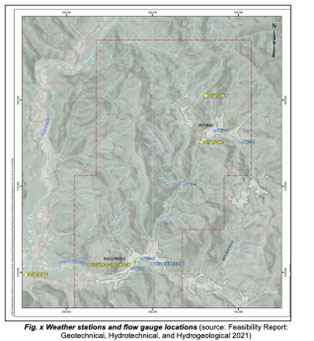
- Geology & Soil: Extensive mining drill programs have provided critical environmental data on soil composition, stability, erosion potential, and possible contamination.
- Hydrology & Hydrogeology: Monitoring surface water bodies, groundwater levels, flow rates, flow direction, and overall water quality is crucial in mine planning. All data is verified by independent experts.Monthly flow charts of streams give a baseline of water hydrology around the site. We have 4 gauges in the main creeks to record flow.We record on a quarterly basis underground water level in 6 hydrogeological drill holes using piezometers and vibrating wire piezometers.
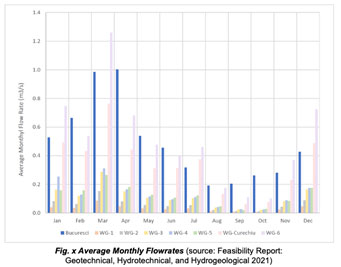
- Air Quality: Baseline air quality measurements include dust, gases (CO₂, NOx, SO₂), and heavy metals.
Guiding our project, Euro Sun Mining has a formidable team of some of Romanians top engineers, some of whom also have doctorships in their various disciplines.
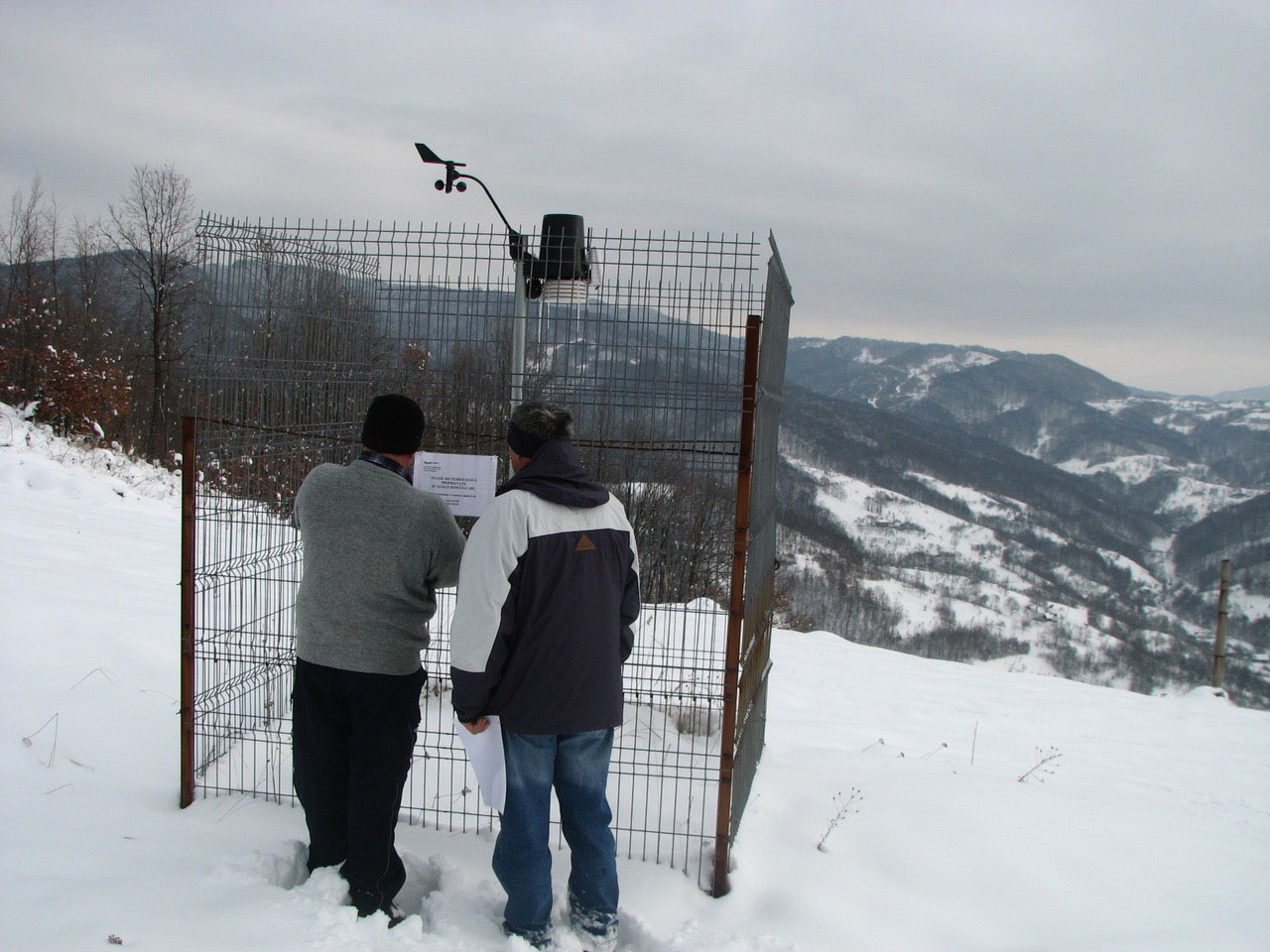
- Biological Environment
- Flora: The concession area contains indigenous vegetation that regenerates quickly. Satellite imagery and ground truthing techniques are used to map this vegetation. The mine plan covers only 4 square kilometers, and for every tree removed, Euro Sun Mining has committed to planting three trees.
- Fauna: Due to the relatively small footprint of the project, the impact on wildlife species is deemed minimal. Livestock grazing and hunting activities will be curtailed during the life-of-mine.
- Aquatic Life & Water Quality: Sampling of rivers and groundwater has been conducted to establish a baseline for metals, pH, turbidity, and nutrients. A small stream may require some diversion, but fish populations, water biodiversity, and overall ecosystem health will remain unaffected.
Every waterbody around the concession undergoes analyses monthly to enable a comprehensive baseline
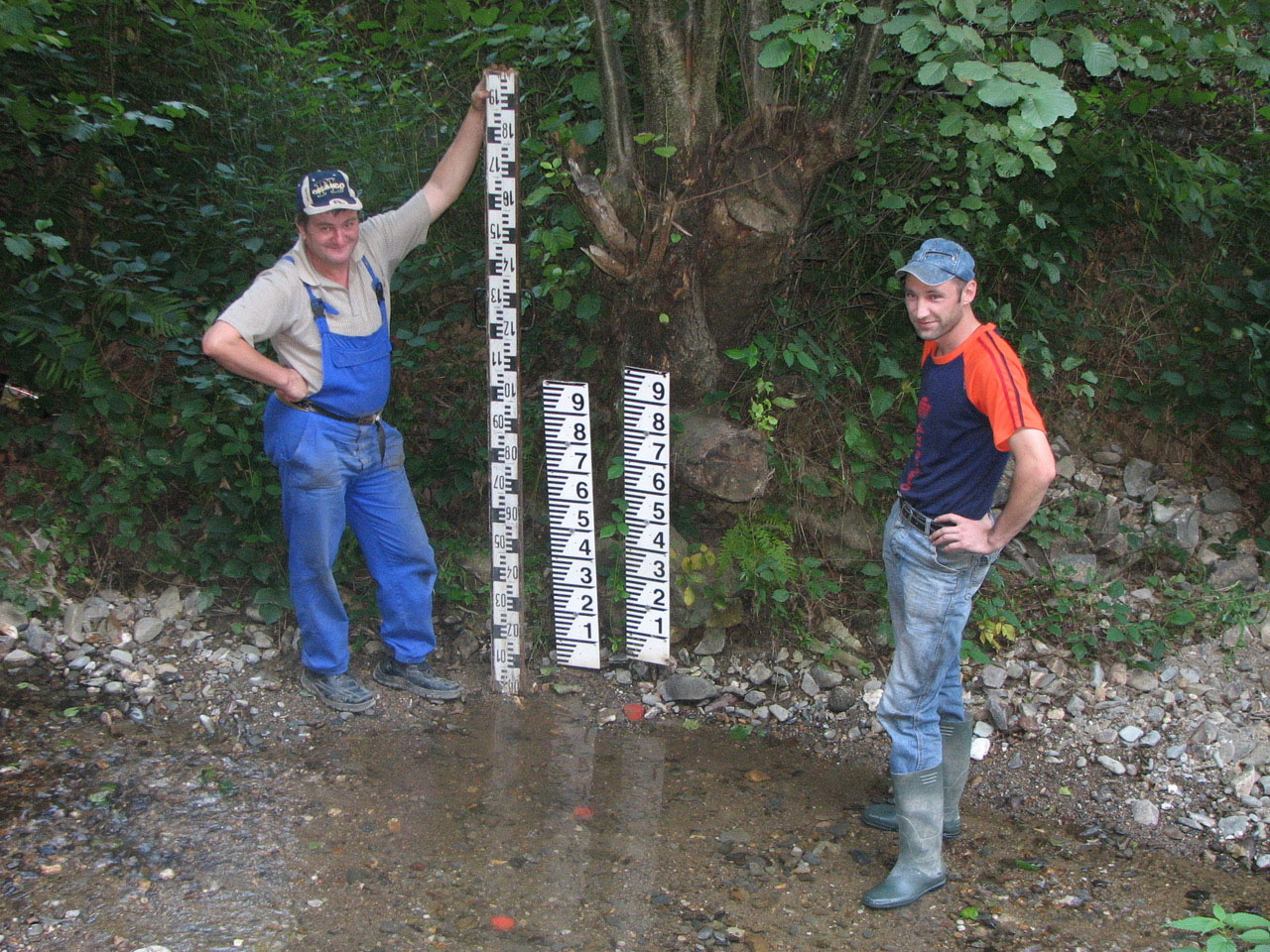
- Socio-Economic & Cultural Environment
- Land Use & Zoning: Current land use data has been mapped, and future development plans are available for public review.
- Population & Demographics: In collaboration with local governments, Euro Sun Mining tracks population trends in Criscior and Brad, analysing household livelihoods and employment patterns.
- Indigenous & Cultural Heritage: While no cultural heritage sites exist within the mining area, nearby sacred sites are designated for restoration and preservation once mining operations begin.
- Public Health & Safety: Euro Sun Mining works within European legislation and alongside local governments to ensure that baseline health and safety conditions are an integral part to the mine plan.
How Does Euro Sun Mining Collect Its Data?
- Field Surveys & Sampling
- Soil & Rock Testing: Laboratory analysis to assess geochemistry, contaminants, and Acid Rock Drainage (ARD) potential.
- Water Sampling: Regular monitoring of surface and groundwater quality.
- Air Quality Monitoring: Air sensors to measure dust and emissions.
- Remote Sensing & GIS Mapping
- Satellite imagery & drone surveys to analyse terrain, vegetation cover, and water bodies.
- Geospatial analysis for land use planning and impact prediction.
- Community Engagement & Stakeholder Consultation
- Surveys and interviews with local communities, government agencies, and environmental experts is ongoing and the Euro Sun Mine offices are open for public engagements.
- Social impact assessments to identify concerns and mitigation strategies.
- Review of Existing Data & Reports
- Examination of historical environmental studies, previous environmental impact assessments and geological assessments.
Why We Pride Ourselves on Baseline Data Collection
✅ Regulatory Compliance: Ensures adherence to environmental laws and mining permits.
✅ Impact Prediction & Mitigation: Helps model potential effects of mining activities and plan mitigation strategies.
✅ Environmental & Social Responsibility: Supports sustainable development and community relations.
✅ Long-Term Monitoring & Rehabilitation: Serves as a benchmark for future restoration and mine closure planning.
By prioritising comprehensive environmental data collection, Euro Sun Mining ensuring that the Rovina Valley Project meets the highest sustainability standards, contributing positively to the local economy and the European energy transition while maintaining environmental integrity.
Strong Community Relationships: The Foundation of Our Sustainability
The mineral wealth within Euro Sun Mining’s Rovina Valley Project is well-documented. With extensive drilling campaigns conducted over the years, Europe’s second-largest copper and gold deposit is well-defined, spanning 4.2 square kilometers and projected to yield over 635,000 tons of copper and 300 tons of gold.
However, beyond the measurable resources, the success of this project depends on critical yet often overlooked factors—community relations, legal compliance, supplier partnerships, and responsible governance. These elements extend far beyond the mine’s physical footprint and are just as vital as the minerals themselves.
A mining license is not just about geology; it hinges on ethical governance, community development programs, and environmental stewardship. Positive relationships with local communities, government authorities, investors, and suppliers are essential for ensuring the project’s long-term sustainability and success. These connections will ultimately define the project’s legacy, requiring a systematic, ethical, and consistent approach to stakeholder engagement.
A Commitment to Community Engagement
The Rovina Valley Project has generated significant anticipation, promising much-needed employment and infrastructure improvements in historically underserved communities. Managing these relationships requires professionalism, transparency, and a deep understanding of community needs and aspirations.

“I don`t believe in dreams, I believe in hard work to achieve ambitious goals”
Euro Sun Mining takes pride in its dedicated community engagement team, led by Florentina Ilioni. Based in Criscior, Florentina has spent over a decade overseeing the administration, design, and implementation of community engagement initiatives. Her team consults with landowners, addresses community concerns, and continuously integrates feedback to refine engagement strategies.

“Authenticity is our community engagement teams guiding principle’
Mining development is a long-term process, and a crucial aspect of Florentina’s role is managing expectations as the project transitions from exploration to full-scale production. Trust-building is at the heart of her approach, which she describes as follows:
“I truly believe in what the Rovina Valley Project will deliver for our communities. I encourage every member of our team and community to work hard and remain committed to turning our shared vision into reality.”
Florentina’s role and that of her team carries significant responsibility, requiring a careful balance between community priorities and operational budgets. This experience has shaped a an authentic approach that mitigates risk, fosters a harmonious operating environment, and drives sustainable outcomes for all stakeholders.
A Social License to Operate
Euro Sun Mining’s social license to operate is strengthened by its commitment to transparent communication. Purpose-built offices in Criscior serve as dedicated spaces for ongoing dialogue, ensuring that community voices are heard and actively incorporated into project planning. This open engagement model helps minimize operational risks while fostering stability and mutual trust.
The legal affairs team also collaborates closely with local authorities to ensure regulatory compliance, reinforcing governmental support and regulatory alignment. Strong relationships will further enable Euro Sun Mining to attract a skilled local workforce and promote regional economic growth through local procurement. Prioritising local employment is central to our strategy, helping to drive social and economic upliftment throughout Hunedoara County.
Through meaningful community engagement, Euro Sun Mining ensures that the benefits of the Rovina Valley Project are clearly understood—delivering economic development, job creation, and long-term shared value.


Community engagement at every level ensures sustainability
While the copper extracted from Rovina Valley will play a crucial role in advancing Europe’s net-zero ambitions and enhancing Romania’s economic security, for the people of Hunedoara County, it is the social responsibility programs that hold the greatest promise. Ensuring the success of these initiatives remains key to Euro Sun Mining’s long-term sustainability and enduring positive impact.
Blessed with an abundance of minerals, for 1000s of years Romania’s Hunedoara County was always one of the Europe’s most industrialised and commercially active areas. However for various socio and political reasons, since peaking during the communist period (1990s), there has virtually been no regional economic development and consequently, the county has suffered significantly. This is reflected by having the highest unemployment rate of 9.6% in Romania, compared to the 5.5% national average.
Population Growth = Future Economic Sustainability
One of the highest risks to long-term European sustainability remains population decline as evidenced in Italy, Greece and parts of Spain. Regretfully this phenomenon is also significant in many parts of Romania. With limited opportunities and decades of economic stagnation, population demographics have changed in Hunedoara County as young people and families have simply left towns and villages to find better lives elsewhere. Now straddled with one of the oldest populations in the country, Hunedoara County is characterised by a shortage of skilled labour and infrastructure collapse. In fact none of the 7 county towns now boast a population above 60,000 people.
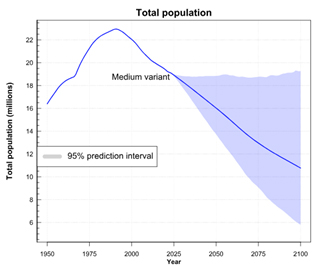
Romania’s population trends. These trends are mirrored in Hunedoara County, where population growth and investment are needed for economic sustainability.
Changing the Trend
With a resurgence in world mining to meet energy transition demands, and the necessity for European critical mineral security to protect the continent’s long-term economic future, the Euro Sun Mining (ESM) opportunity has the potential to be THE European test case for the gentrification of a region achieved through mining.
Aligned to modern environmental protection practices and international governance standards, this test case will also be judged by its ability to deliver responsible mining practices that limit environmental impacts and create a positive legacy.

Responsible mining involves ethical practices, transparency, and accountability at every stage of the mining process, from exploration to post-closure, and strives to meet the needs of current stakeholders without compromising future generations.
The Benefits
The benefits that the ESM project will deliver for community stakeholders revolve primarily around economic opportunities, infrastructure development but overall, improvements to the quality of life. Holding the second biggest measured European deposit of copper in a region steeped in mining tradition, the project is now ripe for execution. In what is arguably one of Europe’s most principled investment projects, and with the backing of the local communities, the project offers minimal environmental disruption and will add immediate value to the surrounding communities.
Economics
ESM’s Rovina Valley Project will generate direct employment for over 2000 local Romanian residents, ranging from skilled labour positions to entry-level jobs over a sustained period. Indirect jobs will also be created in supporting industries such as transportation, food services, and equipment supply.
As miners and their families settle into the area, local businesses, including retail stores, restaurants, and service providers will benefit from increased demand. Related sectors also benefit from economic stimulation. Typically these industries include the construction, manufacturing, and engineering sectors due to the need for mining infrastructure, equipment, and logistics.
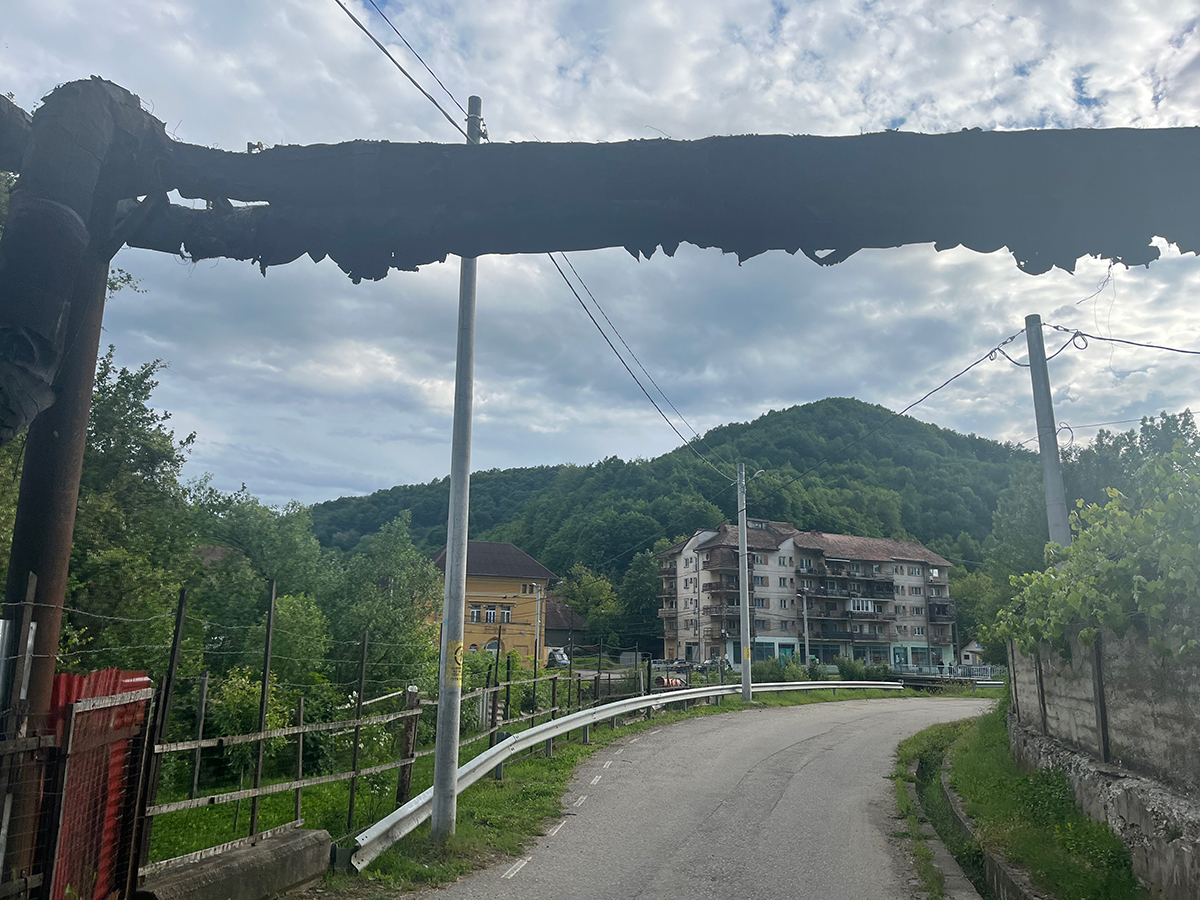
Crumbling infrastructure with large scale population decline is evident throughout the Hunedoara County as economic opportunities have dwindled since mining operations ceased.
Infrastructure Development
The ESM opportunity will require investments in building and transport networks which ultimately benefit the entire community by improving accessibility and transportation. Energy and water supply will also come into focus, and if any improvements are necessary, these will then be shared with surrounding communities.
Social and Community Development
In accordance with international Corporate Social Responsibility (CSR) practices, ESM will continue to contribute to the development of local health, education, sports and cultural services. Various programmes supported in the past for schools, clinics, heritage sites, sports clubs and scholarships will be ramped up as the economic benefits of extraction filter through the system.
One of the most important benefits will be the project’s skills development and capacity building programmes aimed to build the skilled workforce, to the advantage of the broader business community.
Increased Government Revenues
In accordance with Romanian financial legislation, the Rovina Valley Project will generate significant tax revenues and royalties to be paid at local, county, and national levels. These funds will be used for public services, infrastructure, and community programs.
The payments also allow for long-term economic diversification as the influx of funds into local economies from taxes and royalties can be used to support other sectors, potentially leading to a more diverse and resilient economy over time.
Local Empowerment
The ESM opportunity will naturally support local business for the supply goods and services. This encourages entrepreneurship and the creation of supporting small and medium-sized enterprises (SMEs). Local village centres have also been used in the past by ESM to actively engage with the local communities in decision-making processes to prioritise needs.
With an influx of workers and investment into the region, improvements to housing standards, either through new residential projects or by refurbishing existing structures characterises new mining projects. As these communities grow, additional amenities such as recreational facilities, markets, and public spaces may also become available, improving the overall quality of life.
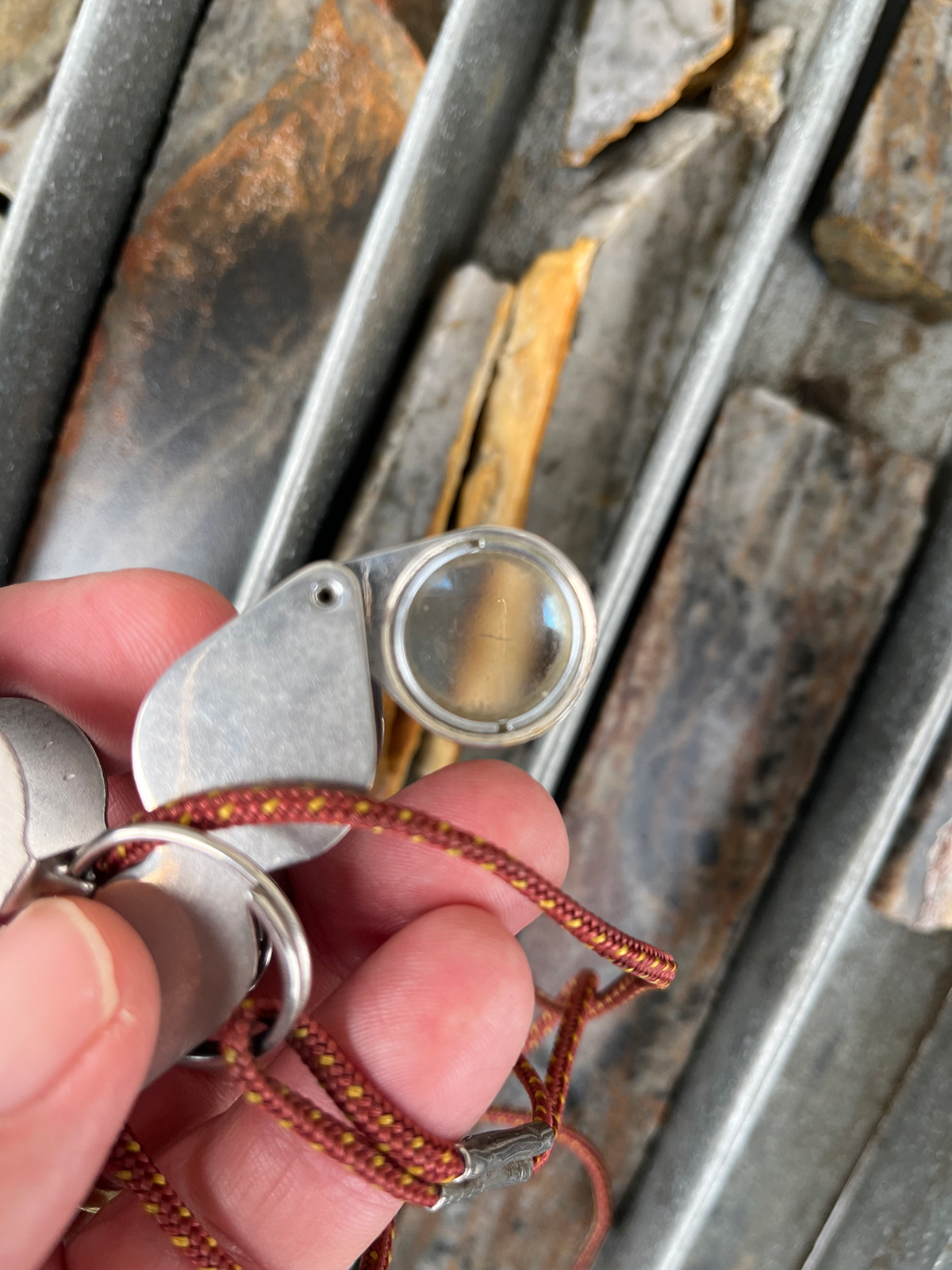
With the second biggest measured copper and gold resource in Europe, and a project ready to start, the opportunity to mitigate decades of economic stagnation and population decline for the benefit of people of Hunedoara County can be realised quickly. The need for critical mineral security in Europe is arguably the catalyst to kick-start development.
Long-Term Economic Opportunities
The end-of-life or rehabilitation of the mine site once the mine closes will offer other opportunities for land use such as agriculture, tourism, or renewable energy projects. With the improved infrastructure, this reset can create sustainable economic opportunities for future generations. This includes lasting impacts in infrastructure (e.g., roads, hospitals, schools) that continues to benefit the community long after after the mine’s operational life ends.
Putting European Mining on the International Stage
The ESM opportunity places Romania firmly on the European copper and gold trading stage which will also enhance trade opportunities beyond the mining sector. Coupled to this, with foreign investment, ESM attracts additional foreign direct investment (FDI) into the region, again creating further opportunities for economic development.
THE Perfect Test Case
With the introduction of the Critical Raw Materials Act and a fully-developed project plan, ESM’s Rovina Valley Project is well positioned to start delivering the perfect economic test case in regional upliftment. Once final mining permitting approvals are gained, and through responsible mining practices, the project is set provide both long-term economic and community prosperity to Romania’s Hunedoara country and overall, support critical mineral security for Europe.
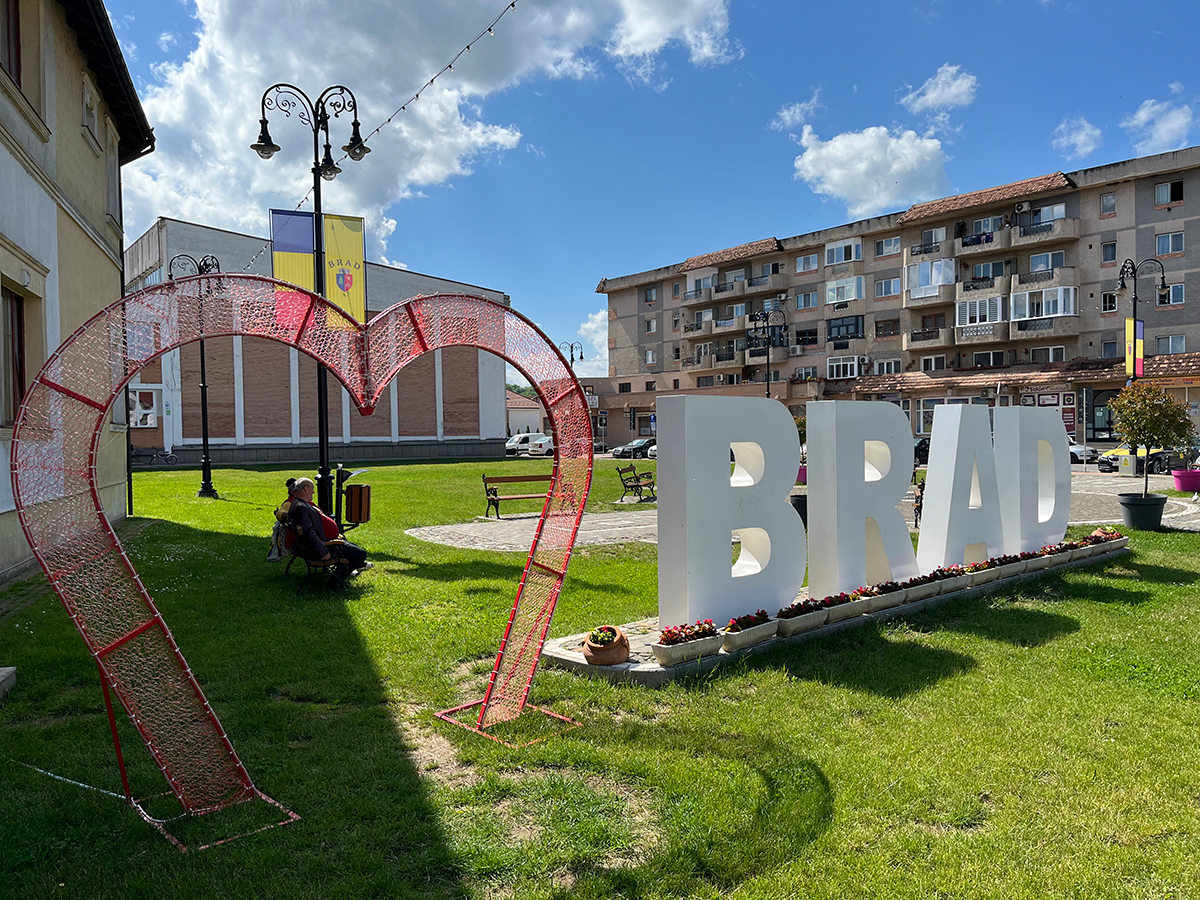
Through the ESM opportunity, the drivers to ignite the Hunedoara County economy are primed, it is now up to European regulators to light the fire.
References:
- https://www.cia.gov/the-world-factbook/countries/romania/
- https://www.worldometers.info/world-population/romania-population/
- https://population.un.org/wpp/Graphs/DemographicProfiles/Line/642
Written by Richard Dolamore, with views expressed his own
The Mining Fishbowl Syndrome
Have you ever worked in a glass building where your every movement could be scrutinized by others who don’t have the slightest inkling as to what you do or value you add?
An easy target
In some respects, this analogy can be equated to the mining industry. For many years, the sector was perceived and looked upon as the perpetrator of exploitation with scant disregard for the people or the environment within which they operate. Mining operations have always been and remain an easy target to criticise. Characteristically, they are large tangible assets, with multiple disciplines, operating in an open financial and environmental system. Mines do not have an end consumer product per se, merely a raw material produced for others to fabricate. It can also be argued that the mining sector has in the past done little to protect itself from criticism, or even to educate a wider audience on their part in the global economy and the invaluable support given to surrounding communities. Mankind has always mined, so historically there will always be examples of incidents. However, like other industries, modern responsible mining is different, with technological advances and ever increasing levels of accountability evident in the majority of public and privately owned companies.
Does any sector contribute more to social responsibility programmes?
Is there, or has there ever been an economic sector that contributes more per dollar, to social upliftment programmes, tax revenue, infrastructure or skills development? Mines by design with large labour requirements are similar to micro cities; often providing energy, schools, clinics, infrastructure, employment and recreational facilities to their surrounding communities. When compared to other US$ billion industries; do the likes of the automobile, medical, financial, consumer, sport, technology or transport delivery sectors contribute anything close to what the mining industry contributes to their local communities? In fact, many operators within these other sectors strategically position themselves to minimise any social responsibility programmes and tax.
Let’s also talk safety
Mining is hazardous by nature and any accident is of course regrettable. However, modern mining in general is accountable, the number of accidents recorded overall are incredibly small given the manhours worked, and operations generally strive for continuous improvement. Comparing industries directly, it would be interesting to know how many Uber or Amazon drivers have accidents per day, how the decisions made by banking institutions effect the mental health of their clients, or even, how many social media posts hosted by IT companies have unintended consequences resulting in lapses in safety concentration or feelings of isolation or depression?
The fog is lifting
The fog is however slowly lifting and the world is waking up to the fact that it needs mining now more than ever. The old adage ‘if it’s not grown, then it is mined’ has never been truer as world economics fanatically pursues the path of net zero, all underpinned by critical mineral mining. No longer the bad egg in the economic basket, it now is the golden egg which needs to be nurtured.
A case study in the ‘mining fishbowl syndrome’
The years of interference by a German sponsored ‘environmental’ NGO, operating in Romania, is a case in point. Objecting to Euro Sun Mining’s Rovina Valley Project (RVP) on ‘environmental permitting’ grounds, far removed from realities on the ground, the NGO has negated to understand that the project’s environmental impact is negligible and strictly controlled by EU law. Using obstructive legal argument, the NGO has also had scant regard for the wishes of the local population, who desperately want economic investment to create employment, infrastructure and to save their villages from ruin following years of interference. The RVP is in fact arguably one of Europe’s finest examples of mining projects that will deliver minimal environmental disruption and restore beleaguered villages into economic hubs, honouring mining traditions that span thousands of years. The tide is however turning in Romania as the merits on responsible mining become better understood.
Europe is changing its mining strategy
For some European countries, the trend this last decade of unbalanced environmental political extremism has come at the expense of energy and economic security. Ironically these politics ultimately undermine the ability to meet net zero targets and have transformed economies to rely more on China. The reality is that policies needed to change, because an impoverished future European population and stressed economy, will not care about net zero if their hierarchical needs change. Through education and desire for critical mineral security, the slow realisation that policies need to be balanced is beginning to filter through legislative actions . This includes new legislation such as the Critical Raw Materials Act which includes recognition that mining activity supports economic sustainability, and is key to the energy transition.
Turning the fishbowl upside down
Maybe it is time for the mining fishbowl to be turned upside down and to be used instead as a viewing glass to see which other sectors contribute as much per capita. For too long now it has been too easy to throw stones at mining in the name of the environment, safety or even economics. With no real understanding of modern responsible mining methodology, it may be time to re-evaluate the crucial role played in local and regional development, the absolutely positive contribution made to the wellbeing of millions of people in mining communities around the world, and the fundamental role supplying the world’s raw materials. It is also time for the mining industry to stand proud and be recognised as the enabler to a brighter future and the supplier of the green energy transition. Simply put, economic sustainability, net zero and the entire energy transition depend on the contribution made by responsible mining. There is also no other sector to pick up the economic and social development mantle which has always been held by the mining sector.
Disclaimer
The above opinion piece (and vent) is my own and does not represent the opinions of any organisations I work for. I remain a proud supporter of responsible mining and advocate for the mining profession to achieve the vocational status and recognition it so rightly deserves.
Published by
Richard Dolamore
April 2024
A Look Back At Our Exploration Success
Exploration is one of the key stages in the mining lifecycle. This is where the services of geologists and mine specialists are enlisted to understand the characteristics of the land being prospected for mineral deposits. Mapping, sampling, and detailing the type of ore and grade held below the surface, all form part of this process. The exploration stage concluded for the Rovina Valley Project was no different.
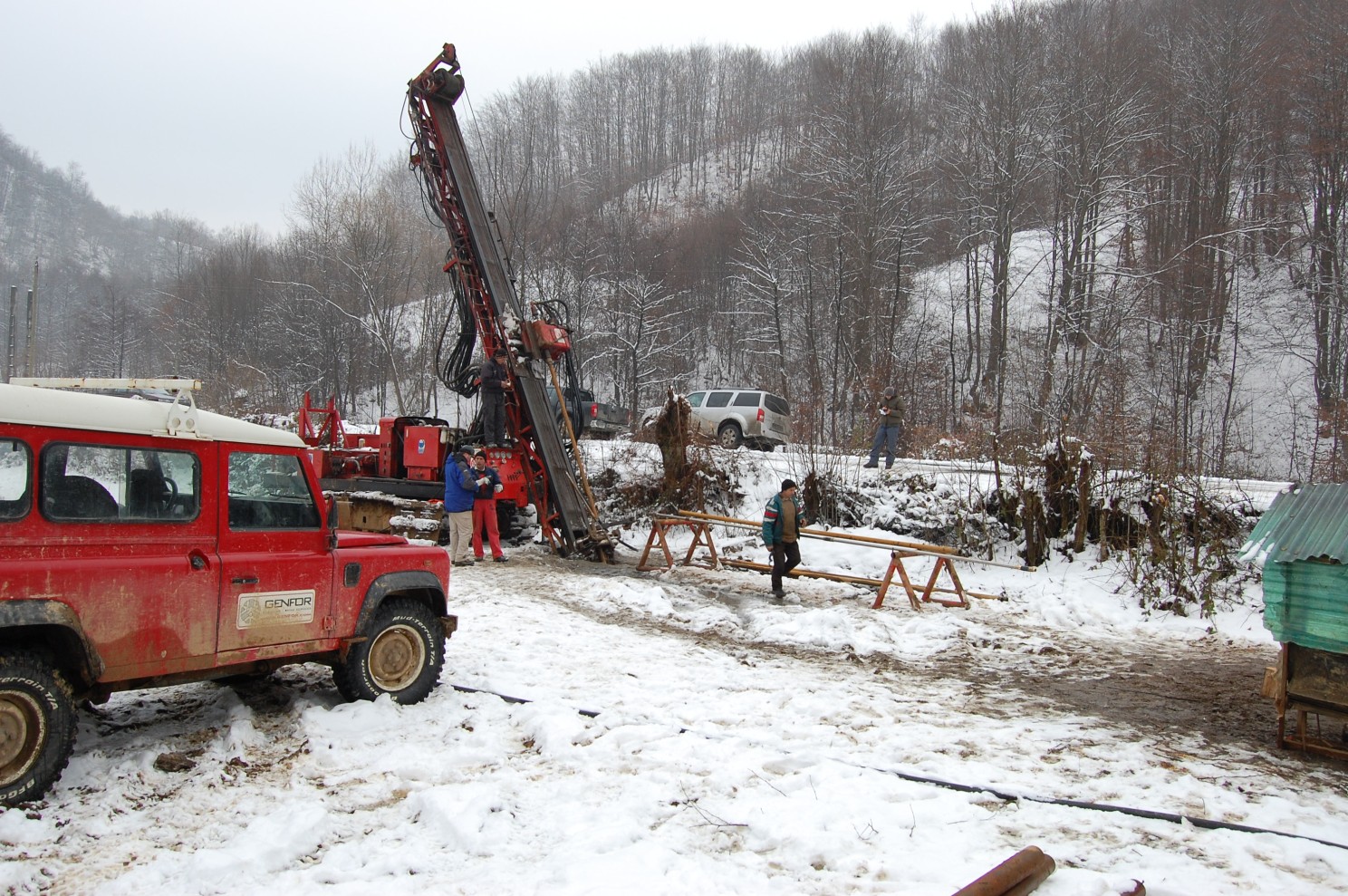
Our exploration team had to deal with extreme weather conditions at times
SAMAX, the local Romanian company representing Euro Sun Mining, began to identify potential in the area in 2004. With the granting of their Rovina Exploration License in 2005, an exhaustive programme of exploration with core sampling took place. The exploration programme was completed in 2012. In that time, an astonishing 281 drill holes were drilled, generating a total of 138,591.33 meters of core samples taken.
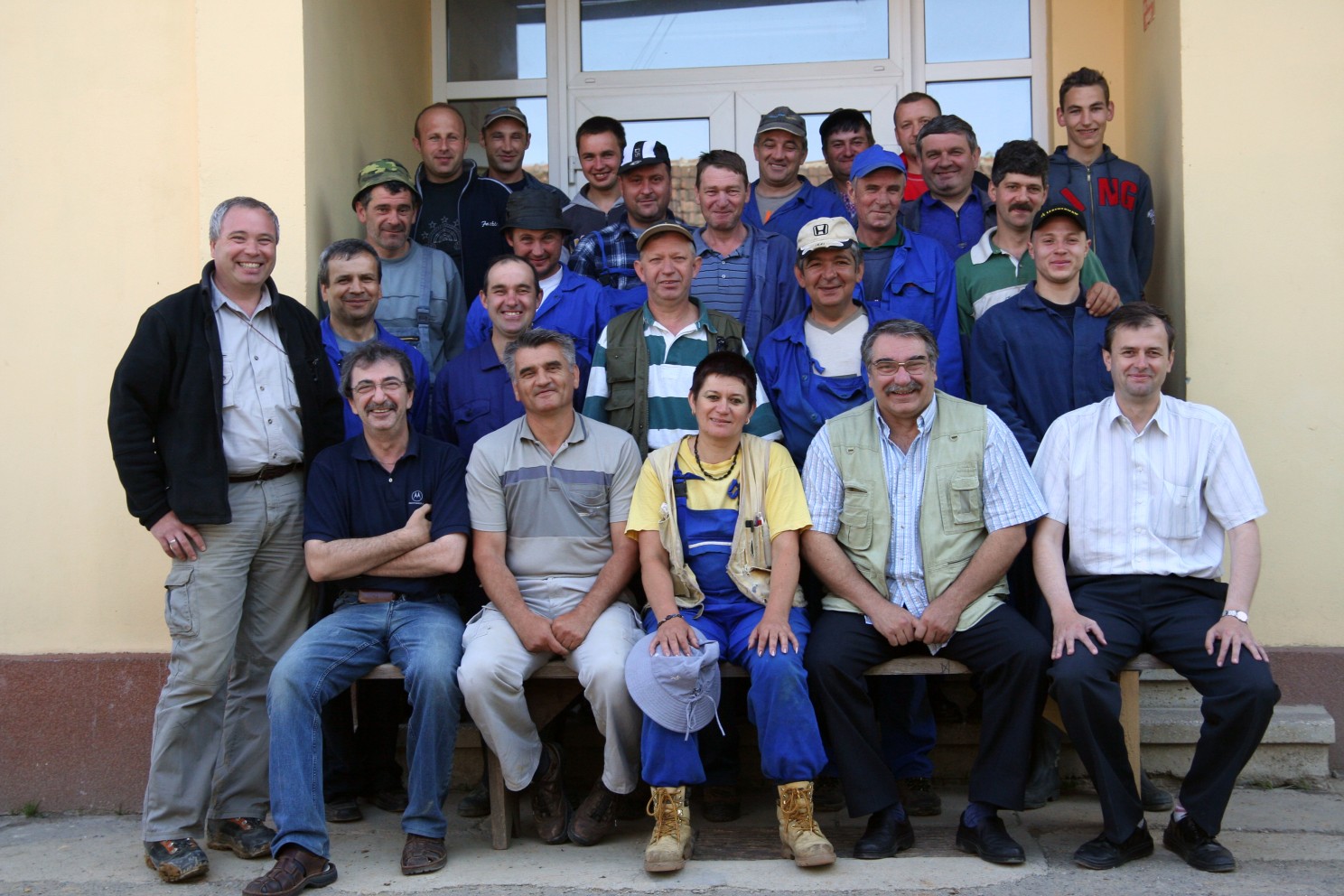
A look back at the incredible team that produced one of the most extensive exploration studies ever conducted in the Rovina Valley
Dr Sorin Halga, General Director, representing Euro Sun Mining, remembers fondly SAMAX’s period of exploration and the challenges endured to deliver an outline of the potential deposit size. ‘For our project, we employed all the classic exploration methods such as Geochem soil sampling, geological mapping, rock chip sampling, ground geophysics and core drilling’ he explains. He continues saying that the biggest challenge was at the Ciresata site where mineralisation does not outcrop, but here develops between 60 to 120 meters below surface. ‘It took enormous skill and imagination to properly understand and identify this ore body’, he articulates proudly. Here, the surface geochemical signature was weak compared to that of Rovina and Colnic, so this pushed all theoretical and physical drilling boundaries. Dr Halga added that the harsh winter weather conditions sometimes faced by the team also helped forge exploration experiences that we all still remember to this day.
All the data captured during our exploration phase has been digitized and is stored for reference. This is vital resource is then available for any new computerised geological interpretations required. Using dedicated software, it is now possible for the Euro Sun Mining’s engineers to call upon this information when needed to model new mining techniques and development phases.
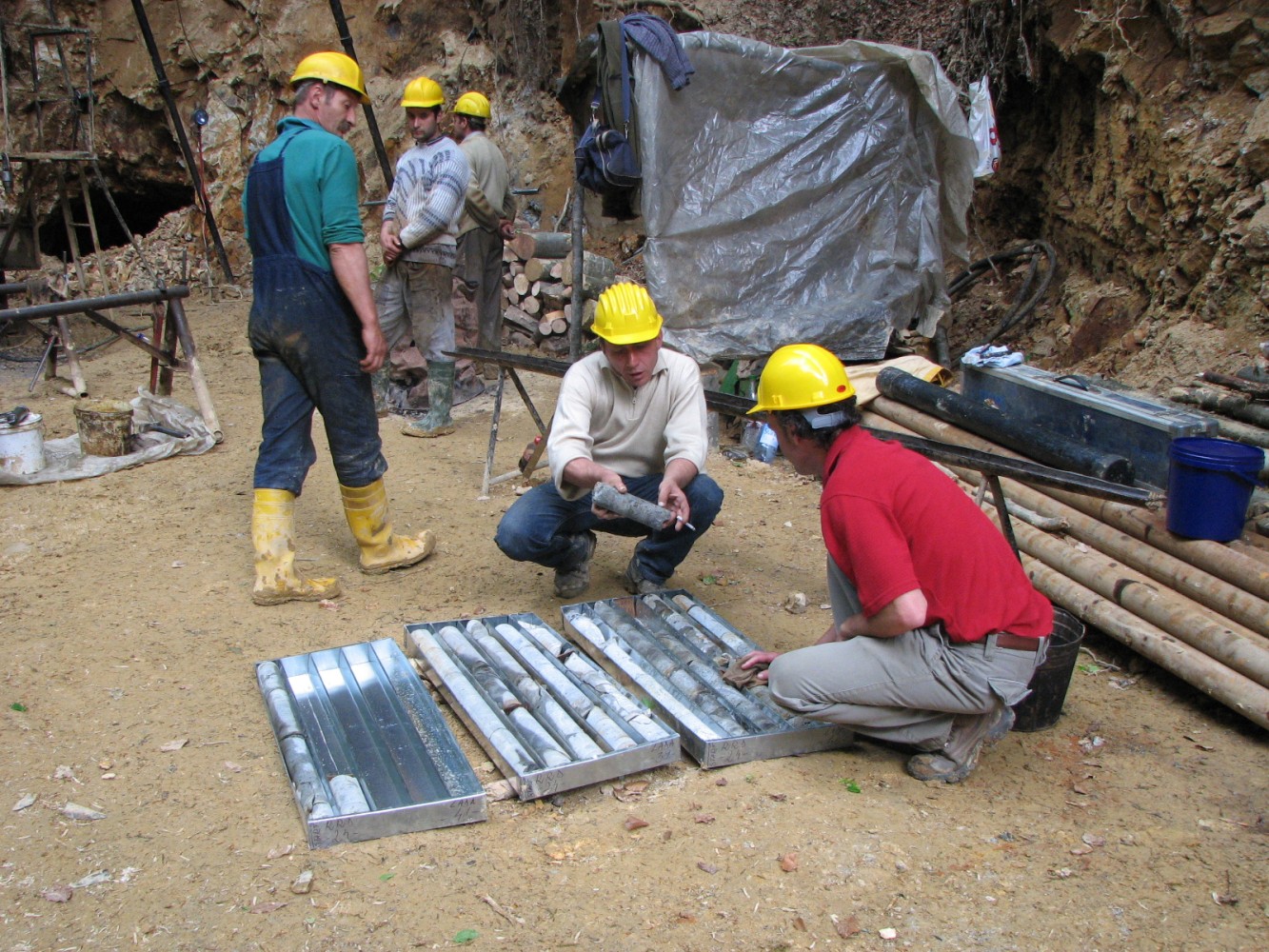
Samples being labelled for analysis
Another vital resource are the actual physical core samples themselves. Every core meter sample taken was initially cut along its axis. One half of this went to a certified laboratory for analysis, all the other halves have been meticulously stored within our impressive sampling sheds in Criscior. These secure structures keep an inventory of every rock sample taken, all neatly categorised. This physical reference is for any future geologist needing to check and correlate the geological formations between drill holes, or to re-interpret the geological models. Our core sample facility also conforms to Romanian legislation which dictates that we keep all our samples ready for inspection for a minimum of 5 years after mine closure, the last phase in any mining lifecycle.
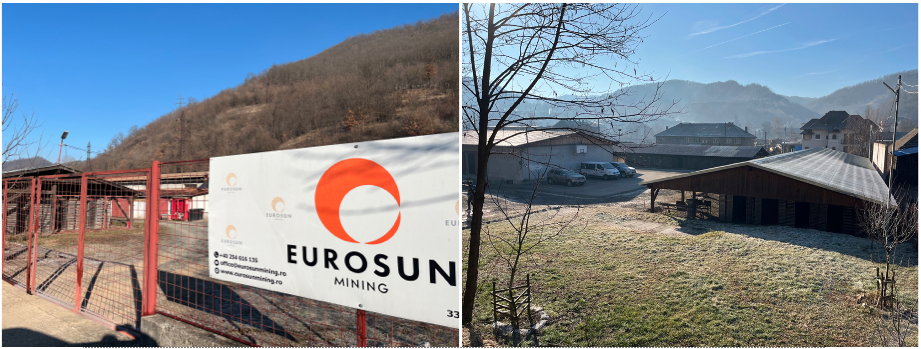
The Impressive Euro Sun Mining Exploration facility in the town of Criscior
For Euro Sun Mining, the benefit of having such an extensive drill sample programme completed is far-reaching. The overarching benefit is that production predictions and return-on-investment calculations are more accurate. With such extensive information to draw upon, the overall mine plan also has less variants and is more predictable. Of interest is that all our sample results have been independently verified. This verification is also in keeping with the ‘National Instrument 43-101 Standards of Disclosure for Mineral Projects’, a security instrument that governs how Euro Sun Mining discloses mining information on the Canadian Stock Exchange.
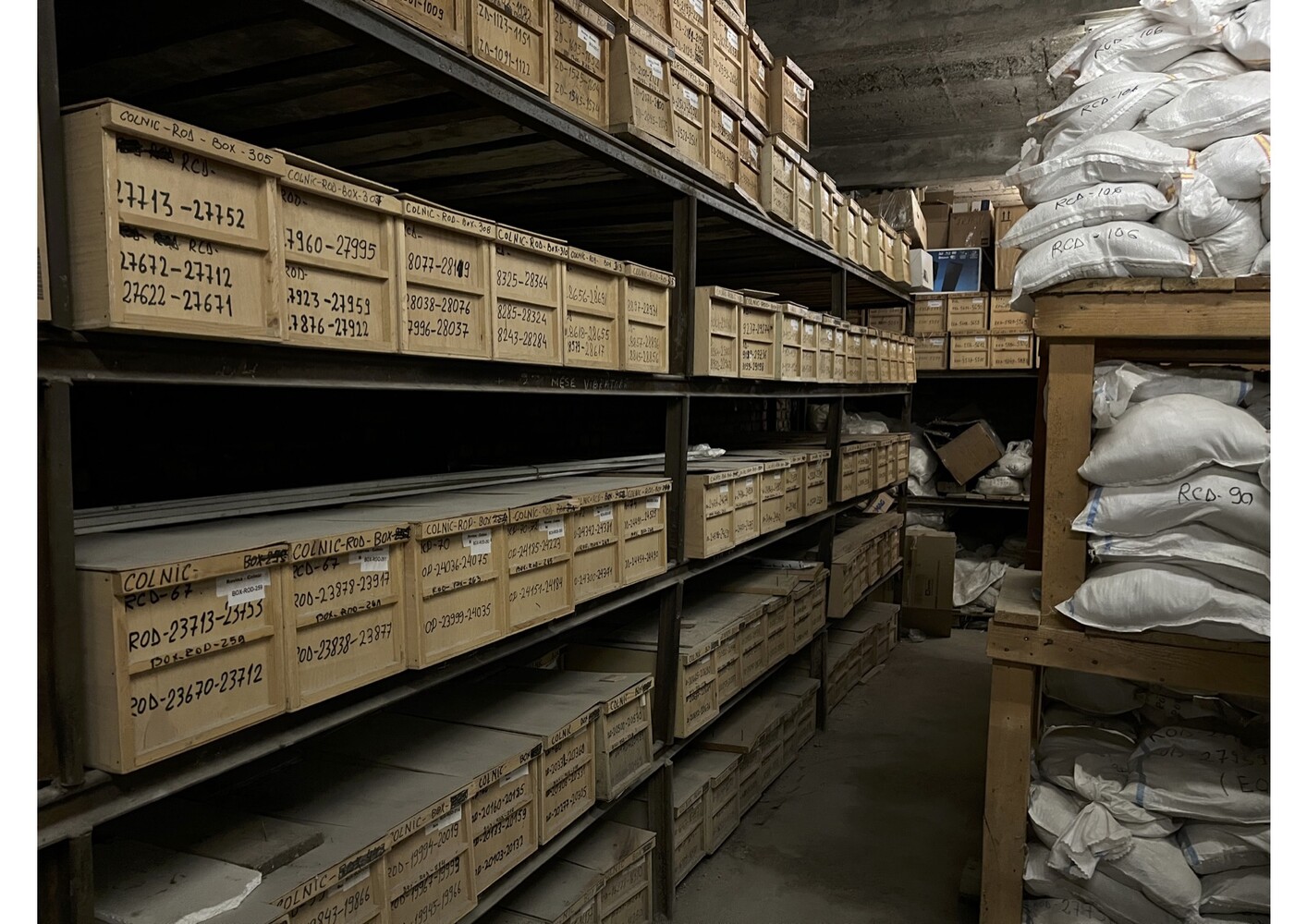
Euro Sun Mining has an extensive facility housing thousands of catalogued samples
For the Rovina Valley Project, all potential areas of interest have been investigated. We must however continue to celebrate what was achieved during the exploration phase as it remains one of the best-in-class ever conducted in Romania. Our next phase is the mine construction once all the necessary permitting is concluded.
South African leading critical mining project in Romania where red tape is being cut
Euro Sun’s Grant Sboros interviewed by Mining Weekly’s Martin Creamer
27th February 2024
By: Martin Creamer
Creamer Media Editor
JOHANNESBURG (miningweekly.com) – Toronto-listed Euro Sun Mining, headed by South African CEO Grant Sboros, is advancing a development-stage gold and copper project in Romania, a country which is reportedly shedding its rigidly bureaucratic past with considerable aplomb.
Unlocking the full potential of the Rovina Valley project, located in west-central Romania, is what Euro Sun is setting out to do with vigour, Sboros made clear in a Zoom interview with Mining Weekly. (Also watch attached Creamer Media video.)
In agreement with government, mining production will be more copper-centred amid the Critical Raw Materials Act passed by the European Union in December last year.
“This is our ticket to ride,” was Sboros’ comment on the new critical minerals legal framework, which specifies that the European Union should have the capacity to extract 10%, process 40%, and recycle 25% of its annual consumption of strategic raw materials by 2030.
Meanwhile, Euro Sun is going all out to make its 100%-owned Rovina Valley project as green as can be.
The planned mining process excludes cyanide and wet tailings and the people of the region are reportedly very keen that Romania’s 2000-year-old mining legacy be amplified.
Cyanide-free processing reduces the need for chemicals within the process, mitigating impurity penalties and protecting the environment, Euro Sun stated in a recent presentation document, which also drew attention to the company producing a clean, high-grade copper concentrate with a strong gold credit.
With Euro Sun also pledging to contribute to the European Union’s control of its supply chain, there is reportedly observable local eagerness for the project to go ahead. “I was there last week, and every single person who you engage, from waiter to mayor, wants the project to happen as quickly as possible,” communications consultant Richard Dolamore stated in a preliminary note to Mining Weekly.
Notwithstanding this enthusiasm, Euro Sun has full compliance at the very top of its agenda and respects everything around what it describes as a beautiful, relatively uninhabited, lightly wooded area with steep hills.
The project will be the biggest in the last 35 years and government will earn 45% of the bottom line.
Since beginning his role as CEO in January last year, Sboros has been engaging intensively with the Romanian government on permitting.
The environmental impact assessment stage is now a hair’s breadth away and the mine will take two years to build, with first production expected to take place in mid-July 2026.
The plan is to exploit the porphyry-style asset as an opencast operation over a 30- to 35-year stretch before probably heading underground.
“We’re moving into a place that was historically mined just 5 km away from our current position, in the mountains of Rovina, very steep mining and not the biggest grades on the planet, but overall enough to produce ten-million ounces, with a view of a greater resource that we’ll prove up on the rest of our licences adjacent to our properties. We‘re probably looking to double up on that,” Sboros said.
Meanwhile, some 40 km away, Gabriel Resources, another Canada-listed company, is intent on getting the Roșia Montană gold and silver project up and running, following a court case that spanned a dozen years and which is poised to net Gabriel considerable compensation.
“We’ve definitely seen a change from what was a bad perception of Romania. I’ve spent a lot of time on the ground with all the stakeholders and we’ve seen a shift from the way the previous government was trying to manage things, compared with the new government now in place, which wants to exploit the resources of the country,” Sboros highlighted.
Europe consumed 16% of the global copper market in 2018, but only accounts for about 5% of global production. With copper demand expected to reach 3.5-million tonnes by 2030, Euro Sun undertook in its presentation document to provide a sustainable supply to support the growing decarbonisation need.

Rovina Village’s ‘Wooden Church of the Exaltation of the Cross’, built in 1780
Supporting Local Heritage
When travelling through Transylvania to the Euro Sun Mining project, the traveller bears witness to the special cultural sights and sounds that make the Hunedoara County (and Romania) so unique. Whether it is the unusual Romanian haystacks, the livestock in backyards, or various medieval fortifications, a richness of tradition prevails, expressed by people who have laboured and toiled with their land over centuries.
One astonishing feature scattered around northern Transylvania is the almost 100 Orthodox churches made only from timber. These religious landmarks are characterised by their slim bell towers at the western sections of their structures. Centuries old, some of these churches date back to the 1700s and were built in response to the prohibition against the erection of stone Orthodox churches by the Catholic Austro-Hungarian authorities of the time. Inside these churches are painted and carved biblical scenes created by artists once dedicated to this sacred art, allowing us the modern visitor a view into ancient history and culture.
In the tiny village of Rovina is one such wooden church. Built in 1780, Rovina’s ‘Wooden Church of the Exaltation of the Cross’ is central to the village and the custodian of the regions heritage. The church is now however in need of urgent restoration to preserve the time-honoured traditions of the Bucureșci Community. Since mining ceased in the post-communist era, very little money has been made available regionally for the preservation of cultural sites. With time passing, the restoration process also becomes more challenging. The wooden tiles for example on the church roof that need replacing are all individually hand-made. This process of restoration is expensive and all work has to be done in accordance specific material guidelines and with the approval of the Romanian Ministry of Culture.
For many years now, Euro Sun Mining has been assisting Father Virgil Oprișa, the village priest, with the general maintenance of the church and surrounding areas. This has included the purchase and installation of a sound system in the main church of Bucureșci Village, maintaining the cemetery gardens, clearing all access roads and paths around the village, and undertaking much of the administrative work in getting approvals for future restoration. Whilst greatly appreciated, there is now a call to conduct major refurbishment on the church itself to preserve this centuries old landmark before further degradation takes place.
As part of our community outreach programme, restoration of the Rovina church remains a high priority for Euro Sun Mining which will be fully realised when mining operations begin. Until that time, we continue to work closely with the church and surrounding community to service basic needs. We also encourage all visitors to our Euro Sun Mining Criscior offices to include a visit to this special church and important heritage site.
Euro Sun Mining is represented by SAMAX Romanian Limited in Crișcior.

Top view of the church, looking over the Rovina Village

To be restored, each wooden tile on the roof is individually handmade

The ornate interior of this unique piece church
Mineral Security Critical to Europe’s Energy Transition
Europe has firmly set itself on a net zero emissions path and continues to embrace all available technologies and emission reducing options dictated by technology maturity, costs and market conditions. Bold policy ambition by governments is also positioning the future business landscape to function within strict emission parameters. The UK government for example, is powering towards decarbonising its entire car fleet by banning the sale of new petrol and diesel cars by 2030. France, despite ongoing push-back from the so called ‘yellow vest’ revolt, continues with plans to target greenhouse gas emissions from individual sectors. The present summer weather extremes in Europe give credence to what European policy makers wish to achieve, but what happens if the supply to the very minerals that underpin the technology required to drive this future economy is threatened?
The consequences of a vulnerable mineral supply chain would be catastrophic for Europe. Reconfiguring how European society operates, and then not being able to supply the essential resources to drive economic momentum forward, would not only risk climate change targets, but also potentially affect political stability. If Europe cannot secure long-term mineral supply chains, then it may indeed find itself up the proverbial ‘creek without a paddle’.
According to a recent report released by the International Energy Agency on critical minerals1, there are three supply challenges to be addressed to ensure the rapid and secure transfer of the energy transition. These are:
- Keeping pace with the rapid demand growth in climate driven scenarios.
- The need to diversify sources and,
- Whether the volumes supplied are from clean and responsible sources.
Trade relations remain complex. In the future, the possibility of global conflict will potentially be driven not from differences in ideology, but from disparities in resources. The insatiable resource appetite of China and India, pitted against the West’s focus to transition to a green utopic economy, is going to dominate resource management and business trade in the decades to follow. International trade alliances continue to be drawn up, and the investment competition to secure mineral supply chains in regions such as Africa or South America continues to play out; offset by the risk appetite to venture into areas of political instability, corruption or conflict.
Against this backdrop, for Europe to realise its net zero ambitions and support the future energy economy being developed, the need to look inwards at every resource opportunity to meet demand and ensure security has to begin. By augmenting mineral supply chains from within Europe, a diversification of supply is also achieved, with automatic European standards of governance and oversight, and with a reduction in emission costs to get minerals imported into Europe.
According to the European Commission2, the European Union metallic minerals sector produces a wide range of ores yielding metals or metallic substances with active mines in Austria, Finland, Greece, Ireland and Poland. With contributions currently at only 1% of total global production, new investment opportunities in Europe that can deliver a secure supply of minerals will become hot property.
References:
- https://www.iea.org/news/critical-minerals-market-sees-unprecedented-growth-as-clean-energy-demand-drives-strong-increase-in-investment
- https://single-market-economy.ec.europa.eu/sectors/raw-materials/related-industries/minerals-and-non-energy-extractive-industries/metallic-minerals_en#:~:text=The%20EU%20is%20an%20important,Poland%2C%20Portugal%2C%20and%20Sweden.
Writer: Richard Dolamore
Writer Note: The views and opinions expressed in the above blog are those held solely by the writer and in no way reflect the views held by any other third party or company.
March 2023
